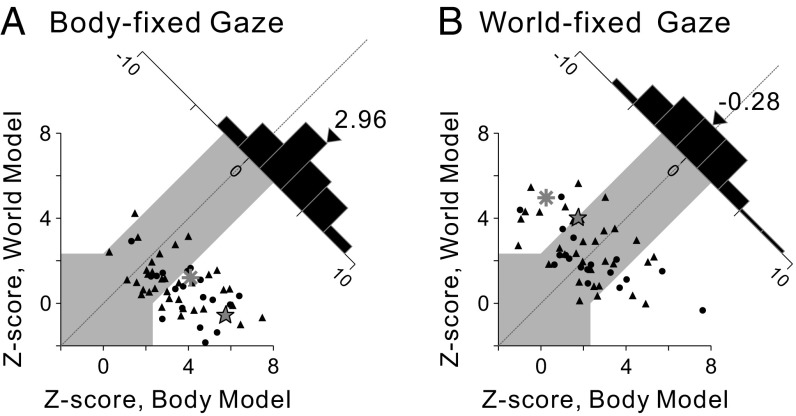Fig. 5.
Model-based classification of spatial reference frames for vestibular heading tuning. Z-scored partial correlation coefficients between the data and the two models (body- and world-centered) are shown for the body-fixed gaze condition (A; n = 57) and the world-fixed gaze condition (B; n = 52). The gray region marks the boundaries of CIs that distinguish the models statistically. Circles and triangles denote data from monkeys F and X, respectively. The star and asterisk represent the example neurons of Figs. 2 and 4, respectively. Diagonal histograms represent distributions of differences between Z scores for the two models. Arrowheads indicate the mean values for each distribution. Median values of Z-scored partial correlation coefficients were not significantly different for monkeys F and X in either the body-fixed gaze condition (body-centered model, P = 0.11; world-centered model, P = 0.19; Wilcoxon rank-sum test) or in the world-fixed gaze condition (body-centered model, P = 0.86; world-centered model, P = 0.14); thus, data were pooled across animals.

